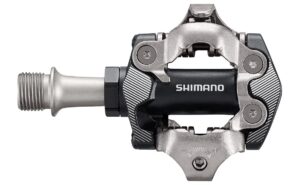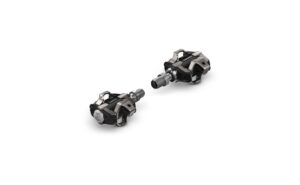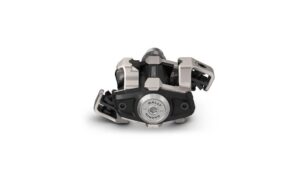-
- -27%
Shimano 105 PD-R7000 SPD-SL Pedal
- Original price was: €165,00.€120,00Current price is: €120,00. Inc. VAT
-
- -19%
Shimano PD-R8000 SPD-SL Pedal
- Original price was: €185,00.€150,00Current price is: €150,00. Inc. VAT
-
- -16%
Shimano PD-R9100 SPD-SL Pedal
- Original price was: €285,00.€240,00Current price is: €240,00. Inc. VAT
-
- -25%
Shimano PD-R9100E SPD-SL pedal
- Original price was: €295,00.€220,00Current price is: €220,00. Inc. VAT
-
- -6%
Garmin Rally ™ RS100 – Power Meter – Single Sensor
- Original price was: €599,00.€565,00Current price is: €565,00. Inc. VAT
-
- -12%
Garmin Rally™ RS200 Power Meter Pedals
- Original price was: €999,00.€875,00Current price is: €875,00. Inc. VAT
-
- -17%
Shimano Deore XT PD-M8100 SPD Pedal
- Original price was: €145,00.€120,00Current price is: €120,00. Inc. VAT
-
- -30%
Shimano PD-M9100 SPD pedal
- Original price was: €185,00.€130,00Current price is: €130,00. Inc. VAT
-
- -20%
Crankbrothers Candy 11 clipless pedal
- Original price was: €499,00.€400,00Current price is: €400,00. Inc. VAT
-
- -13%
Garmin Rally XC 100 power meter single sensor
- Original price was: €649,00.€565,00Current price is: €565,00. Inc. VAT
-
- -14%
Garmin Rally XC 200 power meter dual sensor
- Original price was: €1.099,00.€950,00Current price is: €950,00. Inc. VAT
BUY BICYCLE PEDALS ONLINE
Pedals are for your feet! Pedals set and keep the bike moving – they are ultimately the connecting piece of the drive that transfers the kinetic energy of the legs to the road. The tread surfaces for the feet are attached to the ends of the pedal cranks. When you pedal, you set your bike in motion. Without them nothing works.

Pedals from the following brands are particularly in demand among our customers:
- Bontrager pedals
- Look pedals
- Shimano pedals
- Xpedo pedals
- XLC pedals
- Crankbrothers pedals
- Cube RFR pedals
- Race Face pedals
- Time pedals
- Wahoo Speedplay pedals
WHICH TYPES OF PEDALS FOR WHICH AREA OF APPLICATION?
There are pedals for all forms of cycling, tailored to each specific requirement. The two main families are so-called clipless pedals and platform pedals.
CLIPLESS PEDALS
Due to optimal power transmission, clipless pedals have become increasingly popular over the years. They have long been standard in racing, but are now also enjoying increasing popularity among mountain bikers and recreational cyclists.
By the way, clipless pedals have replaced the so-called hook pedals. Hook pedals have straps or a structure like a cage that you simply slip your shoe into. This allows the cyclist not only to press the pedal down, but also to pull it up in the opposite movement. Not only do you put more power on the road, hook pedals also make it possible to pedal smoothly, which is gentle on the joints and makes the ride smoother.
Modern clipless pedals no longer have a cage-like structure, but rather an integrated holder with the so-called cleats. These are metal or plastic plates that snap into the sole of the shoe so that the shoe and pedal connect to each other. This allows the cyclist to pedal extremely efficiently. The click system also has a stabilizing effect on the foot.
However, clipless pedals require special footwear that must be compatible with the clipless system used. Because the structures on the sole can get in the way when walking, some manufacturers integrate the plates into the sole and recess them.
A contemporary clipless pedal system, for example, comes from the market leader Shimano and is called SPD (Shimano Pedaling Dynamics). Shimano is also known for its low release force: the shoe snaps quickly into the pedal, but can be released just as easily. A twisting movement of the foot releases the connection – but this requires practice.
Here you will find pedals with different click systems:
- SPD clipless pedals
- SPD-SL pedals
- Magnetic pedals
- Wahoo Speedplay pedals
You can also find combination pedals with dual functions: While one side provides a platform for the foot, the other side provides the connection system into which the shoe can be clicked.
PLATFORM PEDALS
Platform pedals are pedals with a relatively large contact surface and no cage. They are also called flat pedals or “flats” for short. These flats can be found on almost all types of bicycles, for example mountain bikes, trekking, BMX or city bikes.
Platform pedals are suitable, for example, for mountain bike beginners who are not yet confident about connecting their feet to the clipless pedals and who want to get off the pedal quickly in an emergency.
Especially in special disciplines, platform pedals are equipped with pins and serrations that grip into the profile of the sole of the shoe and thus provide the foot with optimal support on the pedal – even on steep descents and on jerky, bumpy terrain. With these pedals, the driver can position his foot exactly as he needs it while driving, thereby relieving the strain on his joints.
The technical term for this type of pedal is claw pedal. The tried and tested tread surfaces are also often called “bear paws” and are useful for BMX bikes and mountain bikes. Some manufacturers offer different pins so that you can individually adjust the grip of your pedals. In addition to the structure, the shape of the pedal can also support optimal grip.
However, be careful with expensive shoes! The claws of the pedal can quickly destroy a leather sole!
Pedals that are too large can also do more harm than good: if you lie on your side, there is a risk that the pedal will come into contact with the floor.
The simplest and cheapest form of a platform pedal is the block pedal. It comes with no frills or frills and is often found on inexpensive leisure bikes. Since it has no claws, it should at least be equipped with a solid hard rubber surface to provide sufficient grip for the feet.
WHAT SHOULD YOU CONSIDER WHEN BUYING PEDALS?
Material, shape, weight and functionality play a crucial role when purchasing the right pedals. Anyone who cycles in traffic must also pay attention to the required reflectors.
MATERIAL
Important : Even if you are only an occasional cyclist, you should value good material for your pedals: choose aluminum or steel in combination with profiled rubber. Plastic pedals are not only partially resistant, but also slippery: especially when it rains, the surface can become slippery and only provide insufficient grip.
Gravel Bikes, Touring, trekking bikes, Road bikes or mountain bikes should also be equipped with metal pedals made of aluminum, titanium or steel because of their better properties . For racing cyclists in particular, purchasing extra light carbon pedals can be worthwhile.
WEIGHT
Light bike pedals have advantages because they save weight and make pedaling easier. However, you have to accept a loss in stability and robustness – the bearings in particular are subjected to heavy loads and then have to be replaced every now and then.
REFLECTORS
If you want to use your bike in traffic, the pedals need reflectors. The Road Traffic Licensing Regulations (StVZO) stipulate that every bicycle pedal is equipped with a reflector at the front and rear. Many providers have the reflectors built directly into the pedal. Bike pedals from the leading manufacturer Shimano from Japan, on the other hand, often lack these. In this case you would have to retrofit.
CAMPS
Modern pedal bearings are tight, smooth and durable. Industrial ball bearings or cartridge bearings are common.
The previously common cone bearings were easy to maintain, but they leaked more quickly. Ball bearings score points with their smooth movement, a solid seal and a long durability. A cartridge chamber usually lasts even longer, although this has disadvantages when it comes to maintenance.
USEFUL ADVICE ON THE SUBJECT OF BICYCLE PEDALS
CHANGE BICYCLE PEDALS CORRECTLY
Find out from our advice how to change your bicycle pedals correctly. Step-by-step instructions with all the important details and an additional YouTube video will help you replace your pedals yourself in no time.
CLIPLESS PEDALS OR PLATFORM PEDALS?
What are the differences between clipless pedals and platform pedals? Which pedals are better suited for what purpose and which pedals are the right ones for me? We will explain all the uses as well as the advantages and disadvantages.

















